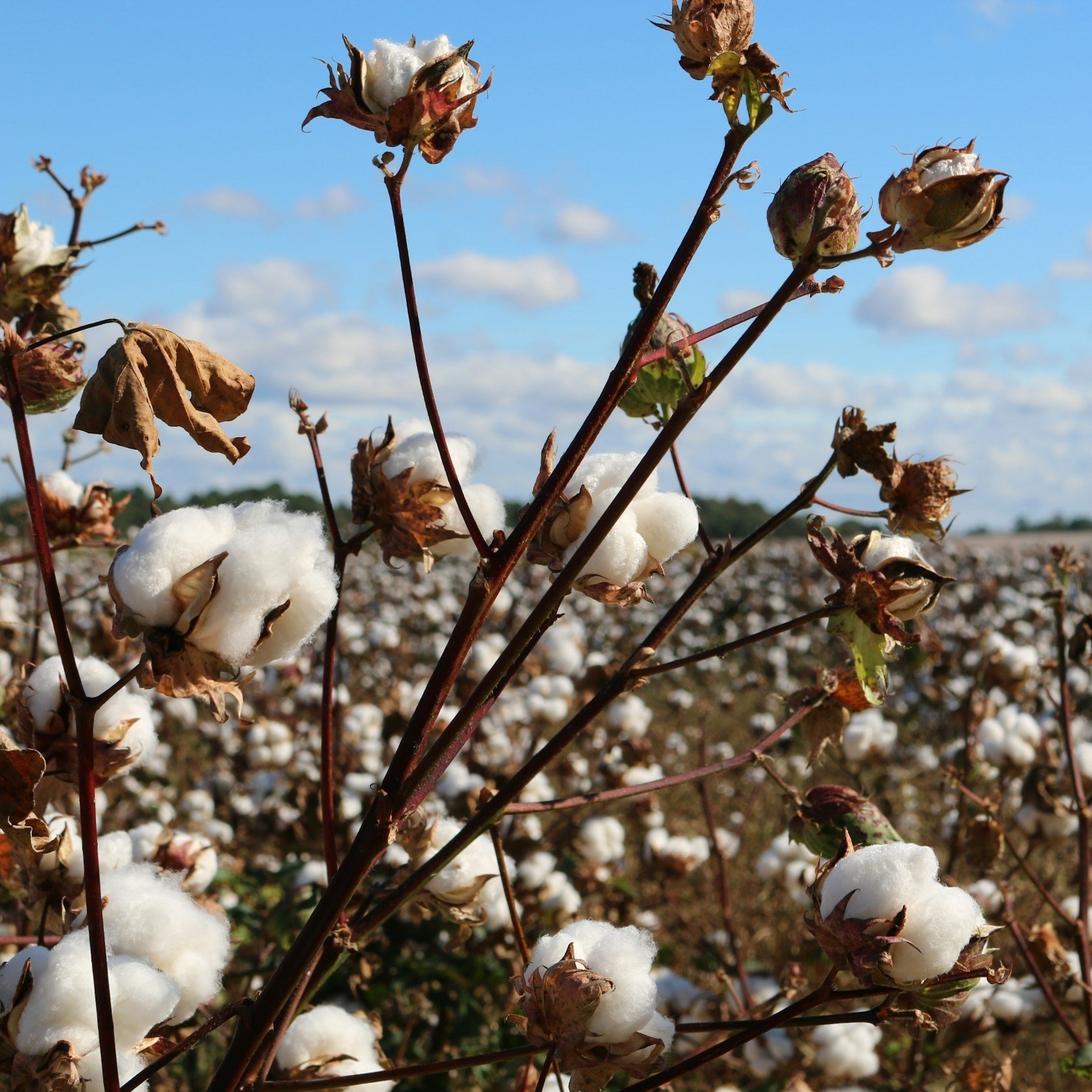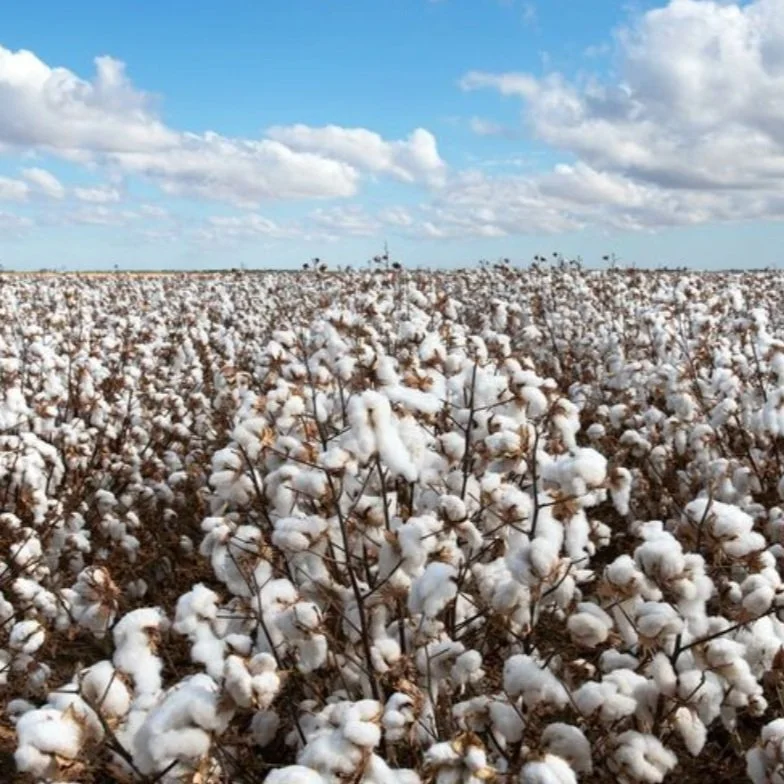Louisiana agriculture generates approximately $3 billion in sales each year, but in most years agricultural productivity is negatively affected by hurricane damage. Louisianans are familiar with the devastation and loss of life and property that can accompany a hurricane event as the state experiences, on average, one hurricane every three years. The total economic losses from a single hurricane can reach tens of billions of dollars, while agricultural losses can exceed one billion dollars. Louisiana is a major agricultural producer for the United States, but the structures, livestock, and crops are highly exposed to extreme wind and flooding during hurricane events.
Read MoreU.S. cotton growers can now enroll in Climate Smart Cotton Program Level 2. This program, led by the U.S. Cotton Trust Protocol, gives Level 1 growers the opportunity to receive additional financial support for implementing Climate Smart Practice Changes into their operations. Additional practice options were also added this year, increasing the number of growers eligible to participate.
Read MoreA glimmer of hope, and hopefully the beginning of what we promised. Yet, there will be several, several days of pulling teeth, some without Novocain. It is not going to be easy. Too, recall our caution that growers will have to wait at least until May 2025 becomes the nearby contract to price their 2024 production.
Read MoreIn the 11 coastal parishes we consult in, lack of rainfall has not been a problem. Many areas have already exceeded the mean annual rainfall accumulation, and it’s not even August. We have already in some areas received in excess of 65 inches, so we are certainly experiencing the opposite of what we dealt with last year.
Read MoreThe USDA says old crop cotton export sales hit a marketing year low during the week ending July 11th. That low for cotton is partially due to questions over global economic growth, including growth in China, which would impact consumer spending on things like clothing.
Read MoreThe 2024/25 U.S. corn outlook indicates larger supplies, greater domestic use and exports, and slightly lower ending stocks. Beginning stocks for corn were lowered 145 million bushels largely upon greater use forecasted for 2023/24. Exports were raised by 75 million bushels based on current outstanding sales and shipments to date. Feed and residual use is up 75 million bushels based on indicated disappearance in the Grain Stocks report for June.
Read MoreLevel 2 Climate Smart Cotton Program enrollment is open to U.S. cotton growers. The program, led by the U.S. Cotton Trust Protocol, gives Level 1 growers the opportunity to receive additional financial support for implementing Climate Smart Practice Changes into their operations.
Read MoreThe USDA recently released its annual Acreage Report which provides markets a more accurate idea of spring planting progress and what potential supply implications may be in store for the 2024 crop year. On the demand side, USDA also released its Quarterly Grain Stocks report which shows usage rates between March 1, 2024 and June 1, 2024. These changes in supply levels will impact 2023/24 ending stocks and 2024/25 beginning stock levels which will subsequently be reflected in the July World Agricultural Supply and Demand Estimates report.
Read MoreThe Cotton Consultant of the Year (CCOY) Award recognizes a consultant who has made great contributions to the cotton industry through outstanding customer relations, leadership and innovation.
Read MoreThe first half of May was wet for much of Louisiana’s cotton belt, which kept many farmers from planting. Now, the pendulum has swung, and farmers are racing to get their cotton planted before it gets too dry.
If all intended acres of cotton are planted, Louisiana could see one of its largest crops in the past decade.
Read MoreMisery loves company and cotton had a lot of company this week. Yet, cotton trading should not have been that bad. The old crop July contract, trading with just over two weeks before first notice day, fell into the 73’s, while next year’s hope – the new crop December futures contract – fell into the 72’s. The 74-cent area appeared to be the holding station for July futures and still may be, but market/government fundamentals could push it lower.
Read MoreOpportunities to advance sustainable cotton farming in the United States are growing thanks to a nationwide partnership led by the Soil Health Institute’s (SHI) United States Regenerative Cotton Fund (USRCF).
The fund’s holistic approach to advance economic insights, soil health measurement, and education has made significant progress in the U.S. Cotton Belt since its establishment, engaging more than 1,000 cotton farmers and their advisors.
Read MoreTwelve U.S. cotton industry members have been chosen to participate in the National Cotton Council’s (NCC) Emerging Leaders Program for 2024-25.
Now in its ninth year, the NCC’s Emerging Leaders Program is supported by a grant to The Cotton Foundation from Bayer.
Read MoreCotton will come around. But as we have repeatedly commented, the 2024 crop will have to be priced in 2025, most likely based on the May 2025 contract. It is just going to take that long before mills will approach 85% spinning capacity. Neither U.S. nor world carryover are burdensome. Thus, the inching upward of demand will pull prices along.
Read MoreThe 2024/25 U.S. corn outlook is for larger supplies, greater domestic use and exports, and higher ending stocks. The corn crop is projected at 14.9 billion bushels, 3 percent down from last year’s record as increases in yield helped partially offset decreased area. The yield projection of 181.0 bushels per acre is based on a weather-adjusted trend assuming normal planting progress and summer growing season weather, estimated using the 1988-2023 period.
Read More












